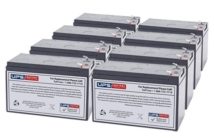Memory effect is observed in rechargeable batteries, that causes them to store less power. The other terms used for memory effect are battery effect, lazy battery effect or battery memory. This effect occurs when during discharge, the battery does not discharge fully every time, resulting in residual charge. After repeated charging, that residual charge increases to a point where battery can store only a small amount of useful charge.
Memory effect used to be seen in NiCd and NiMH batteries only, but recently researchers have observed it in Li-Ion batteries also.
How to remove the memory effect?
Many people who are not aware of this effect, generally throw away the battery, because they think it is dead. Please note that a battery with memory effect can be revived to its maximum capacity, if it is not damaged. The simplest way to get rid of memory is to discharge the battery to 1 Volt per cell (VPC), and then charge it fully. You can keep repeating this procedure until battery restores its maximum energy capacity. The only difficulty with the above said method is, one needs special equipment to discharge battery to 1Volt per cell.
As said, prevention is better than cure, so if you care for your battery from beginning, you can surely prevent your battery from such effect.
Every battery comes with an expected life cycle. For example, NiCd batteries have a life of approximately 1000 cycles, as long as they are treated very well. So, if your battery is old and does not hold charge any more, chances are it’s not memory effect but the end of the battery’s life cycle.
Related posts:



